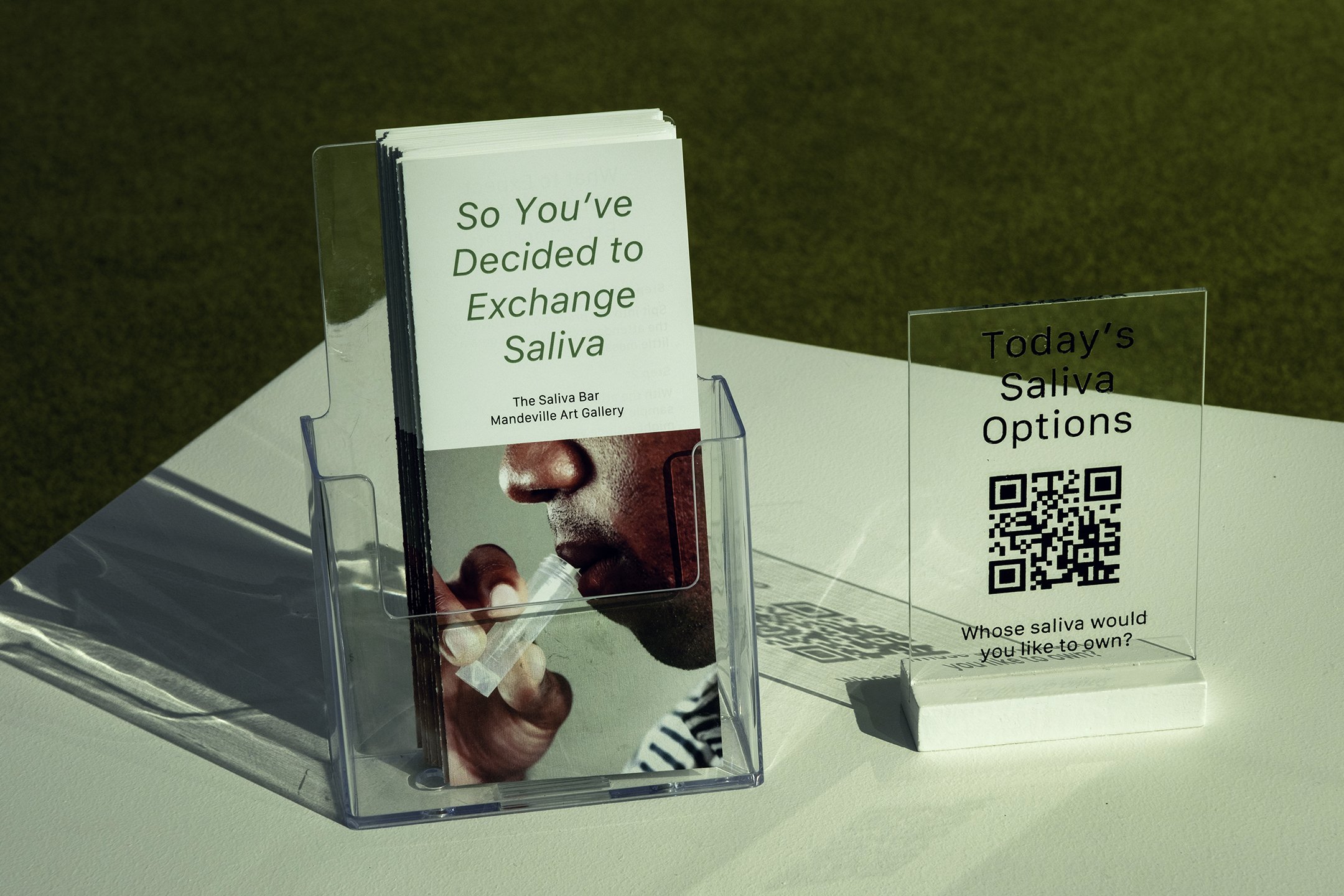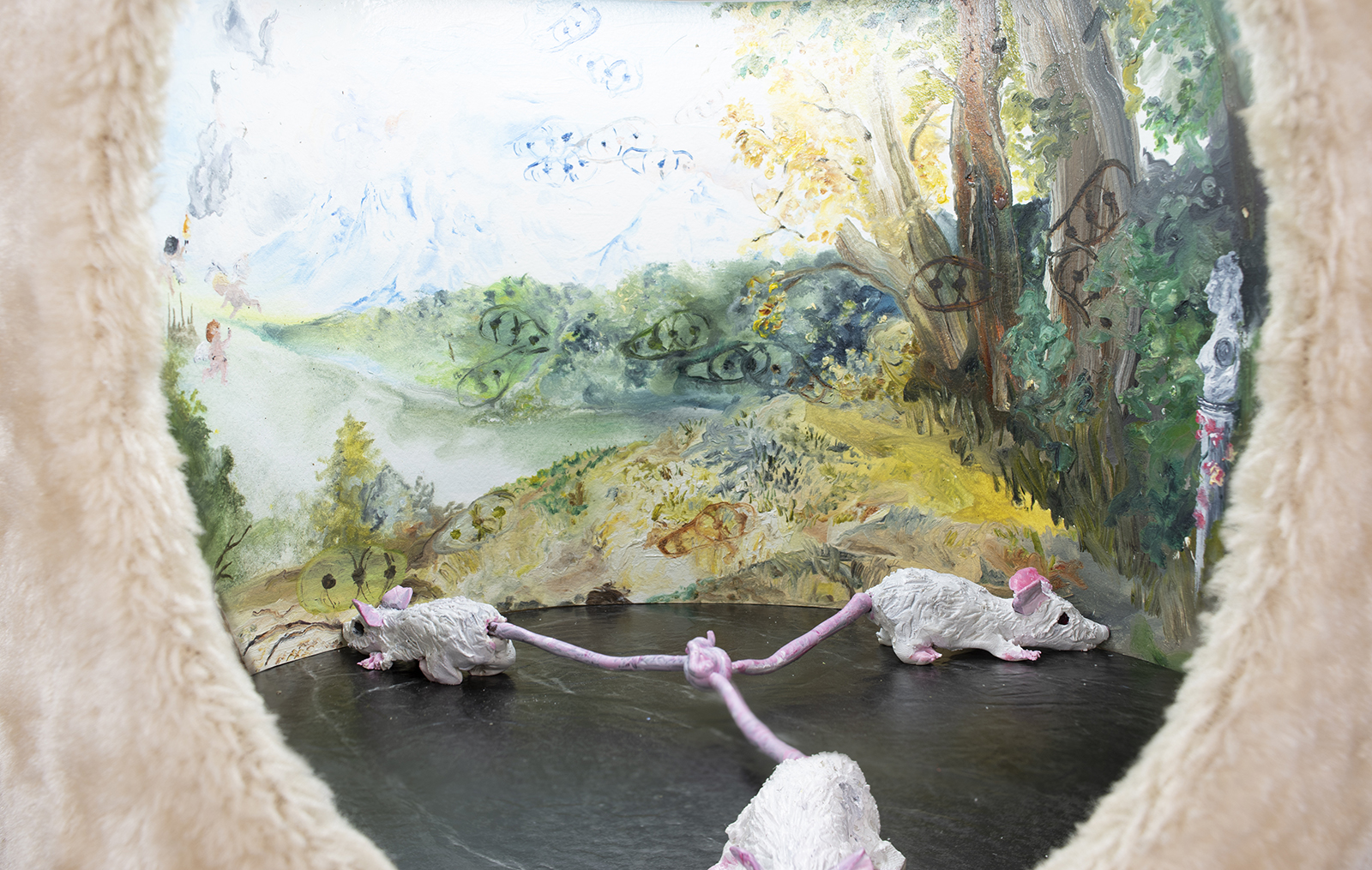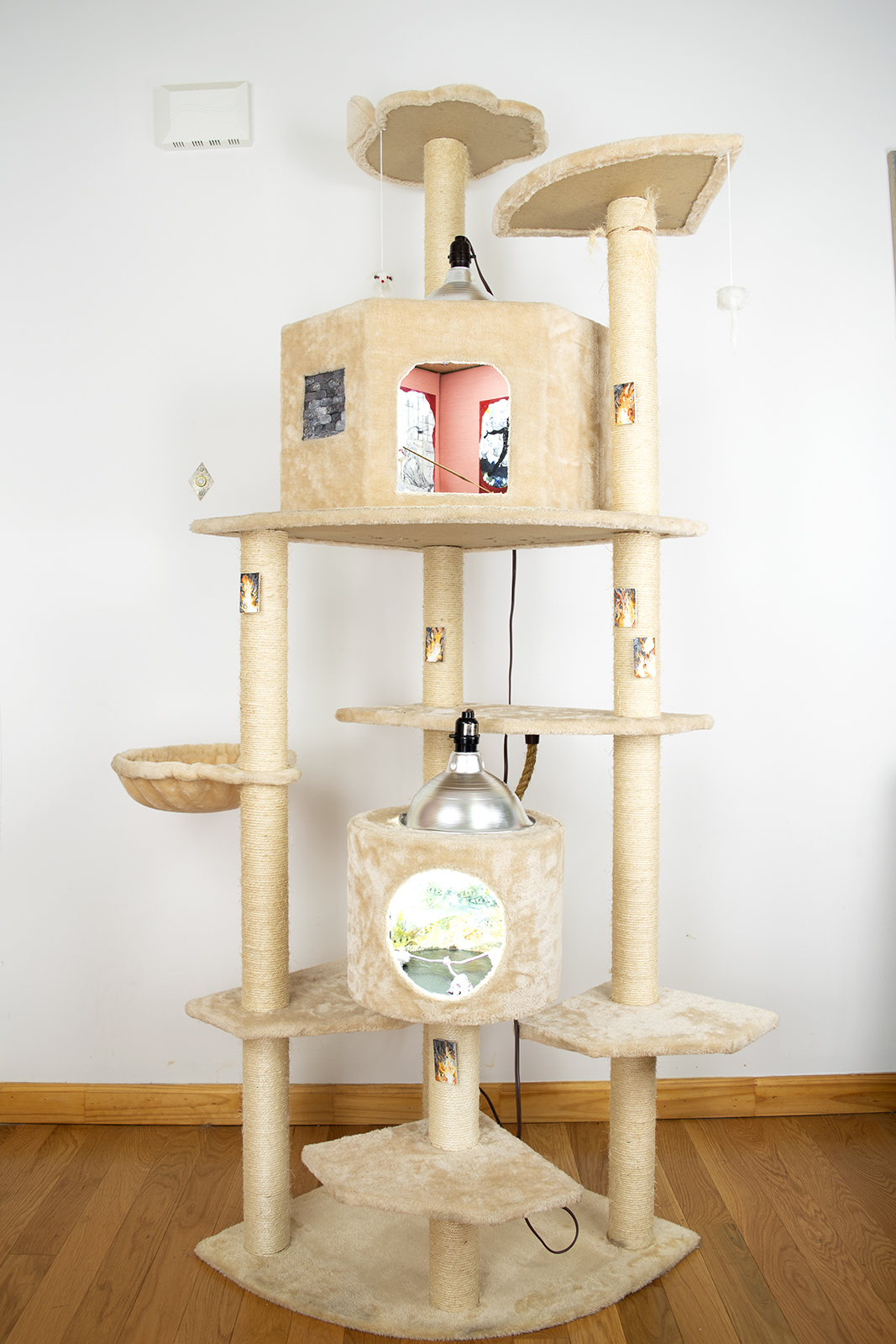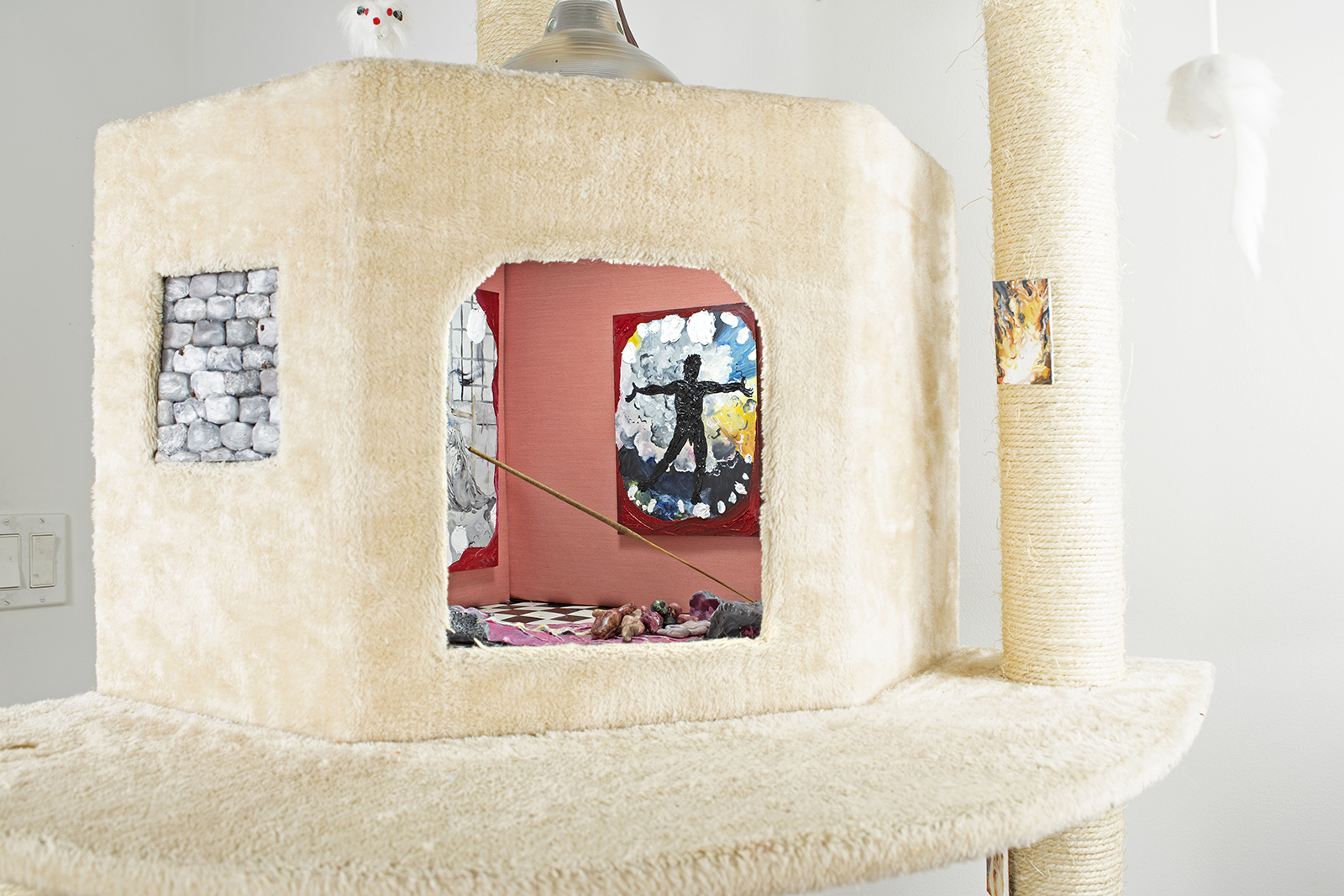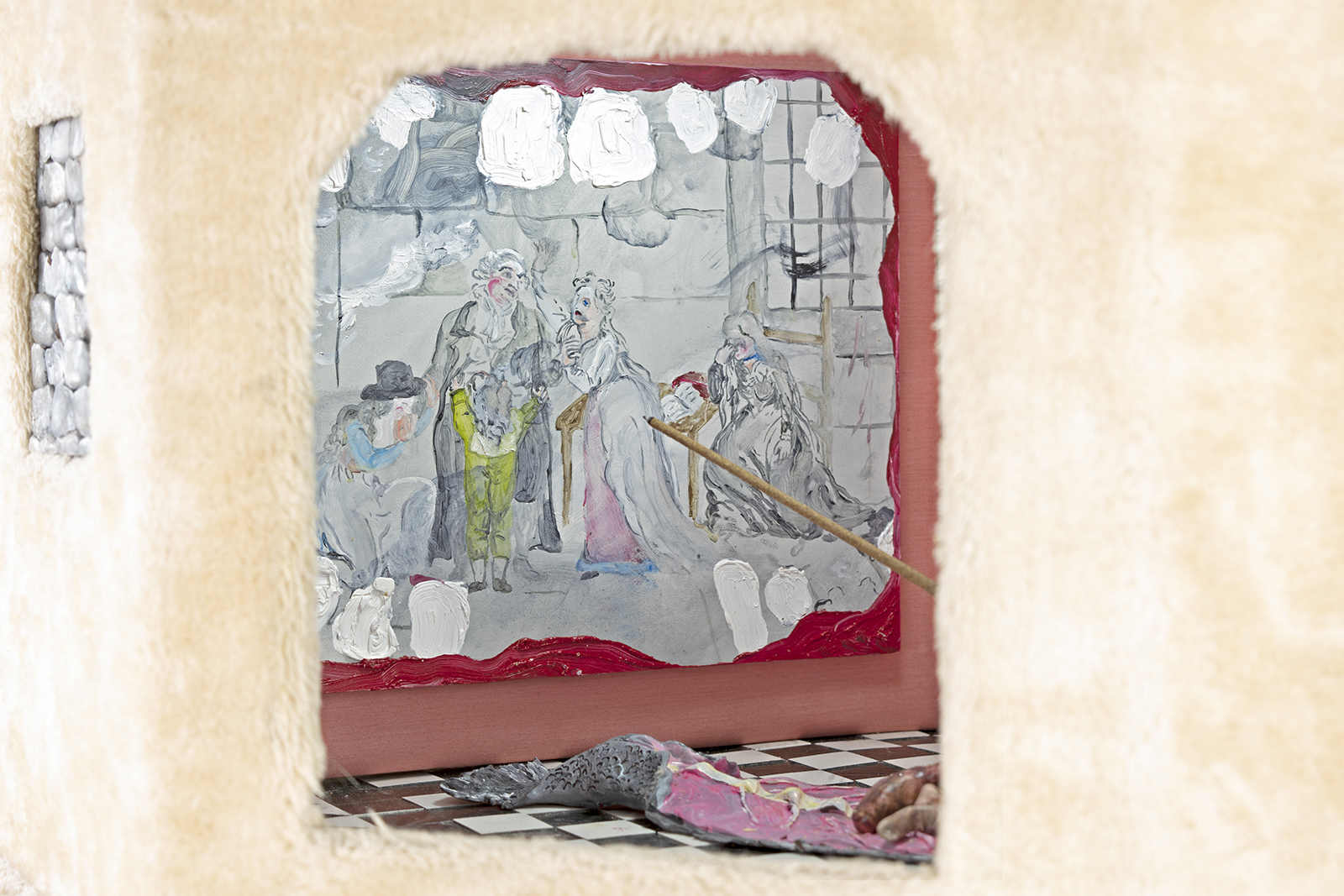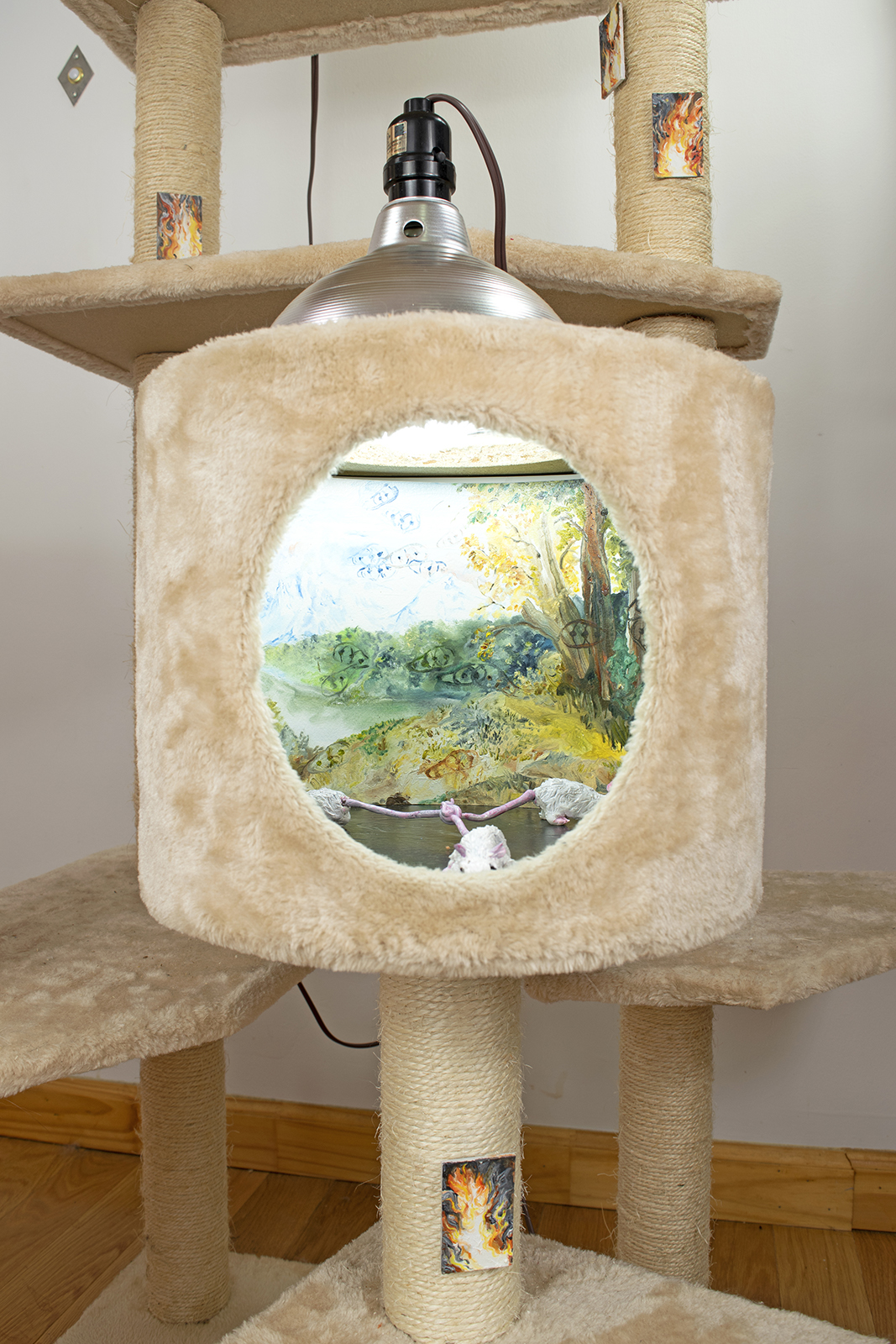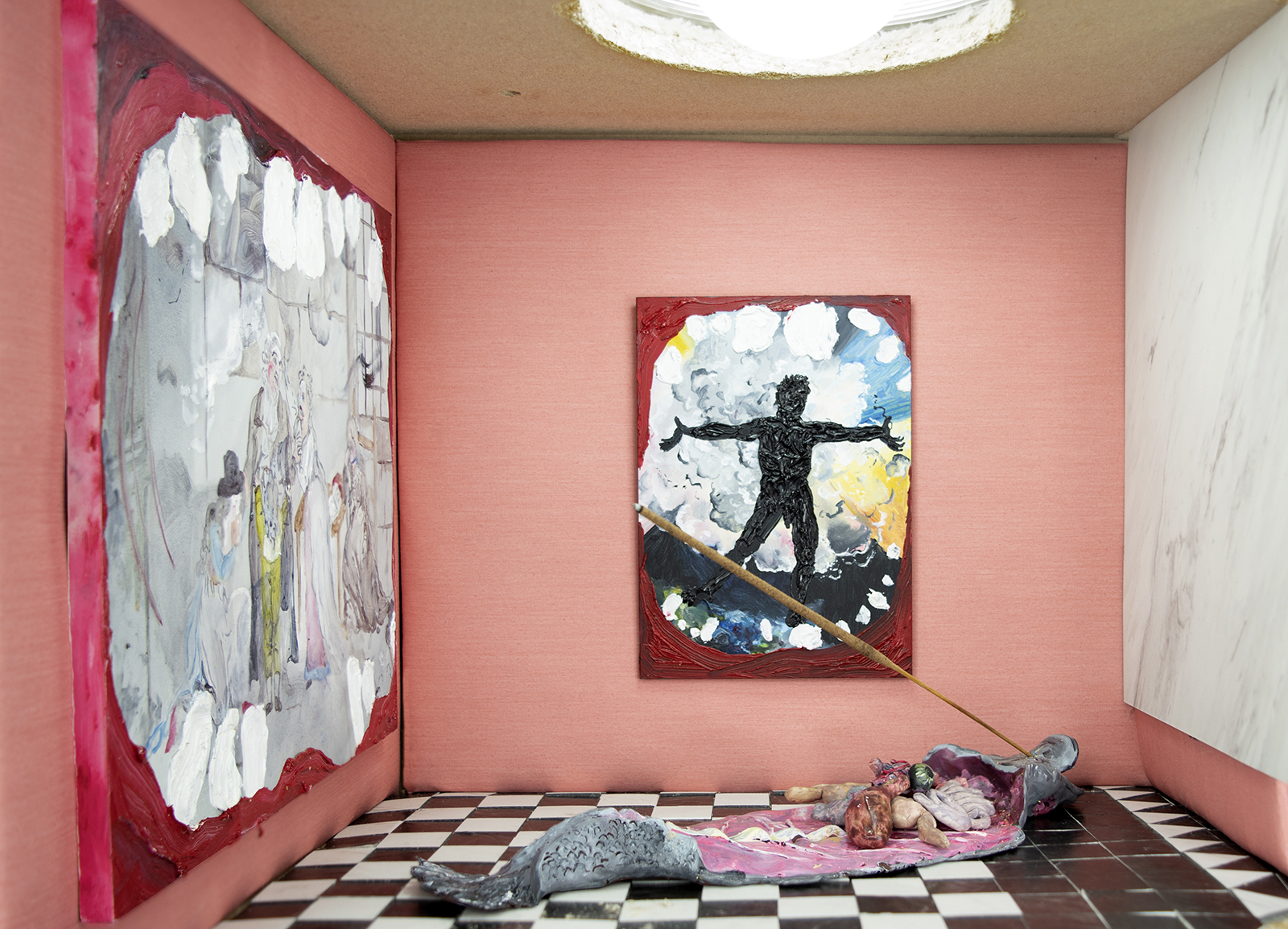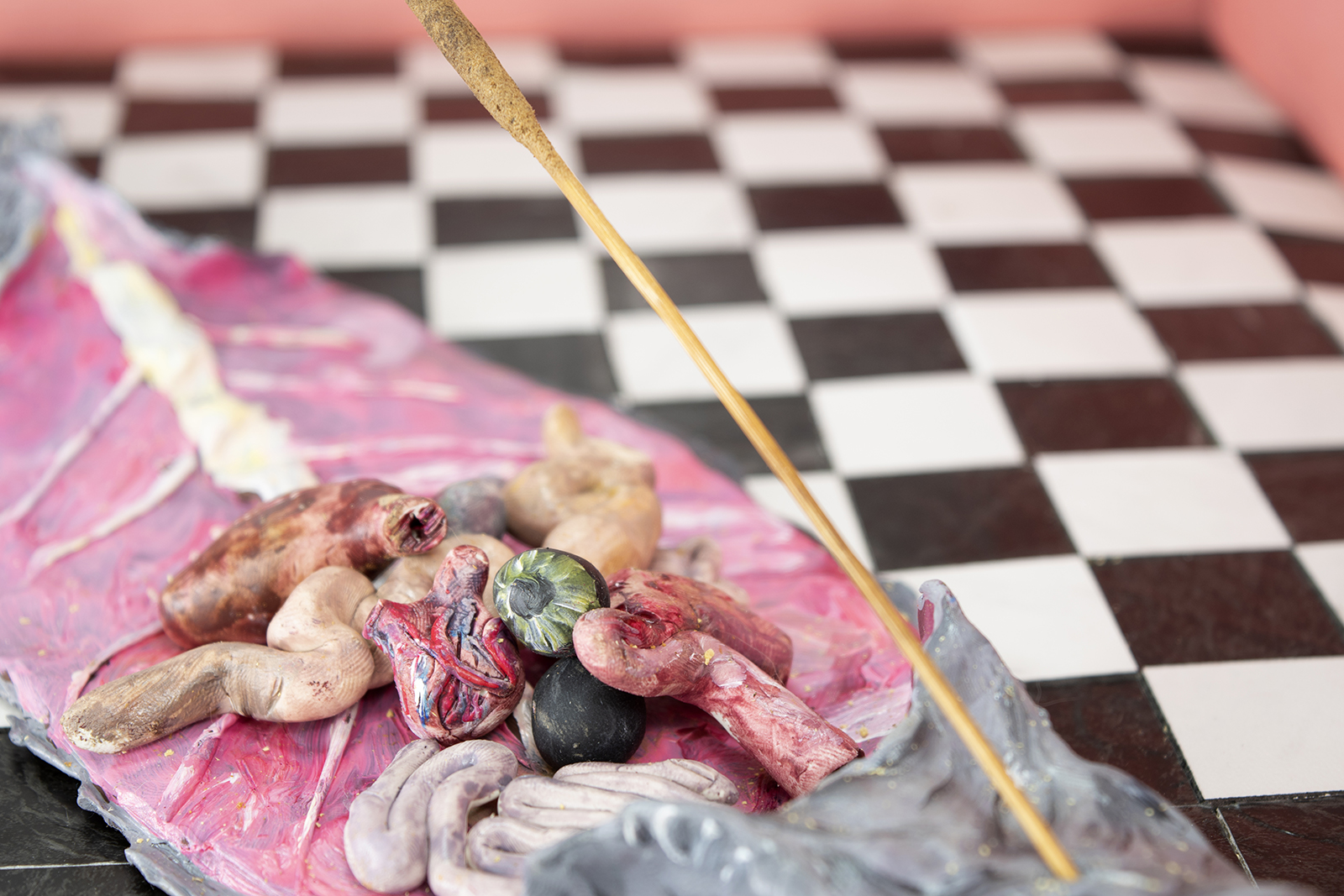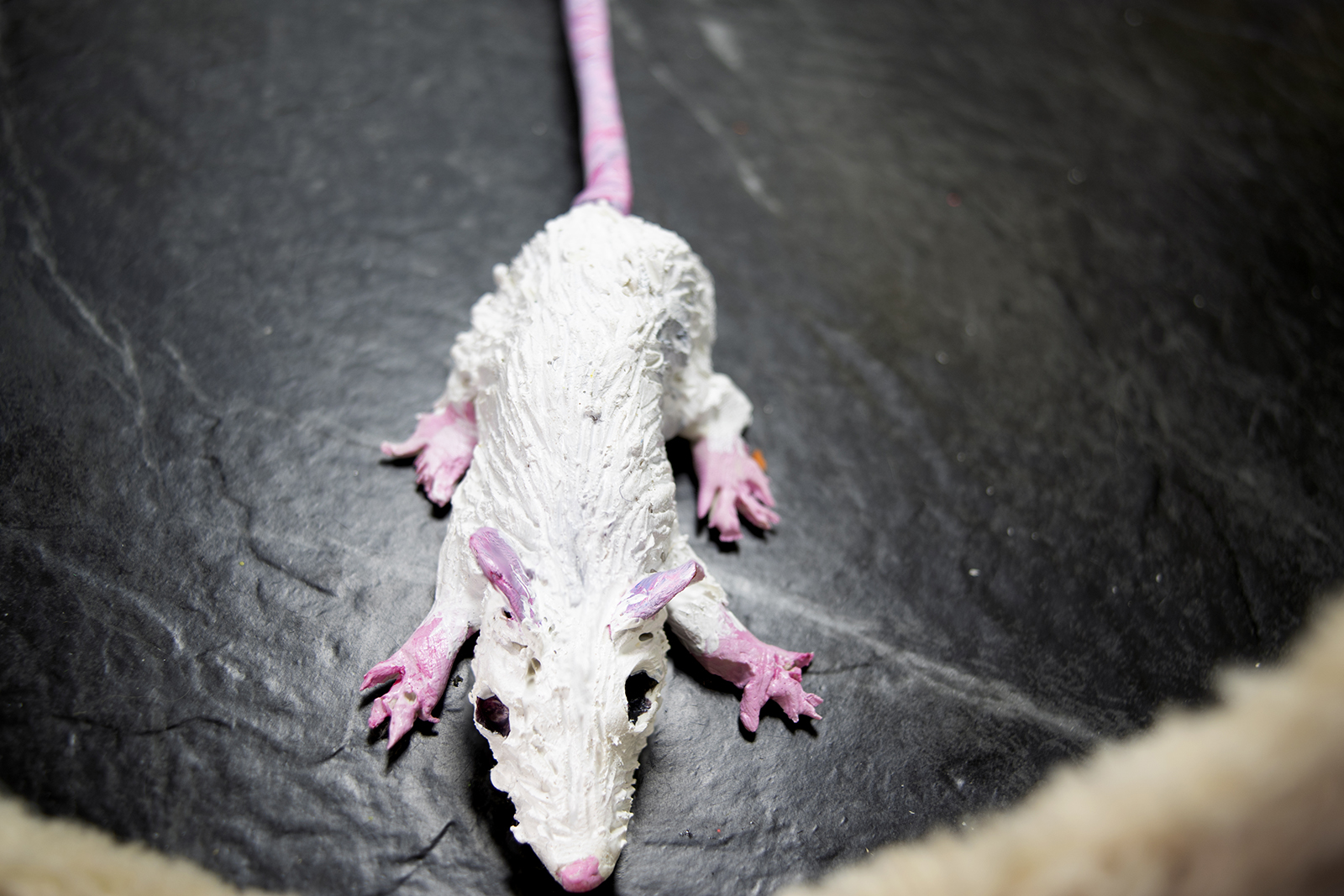Hugo Crosthwaite, La Linea (The Line), 2024, Acrylic and color pencil on canvas
Courtesy of the artist and Luis de Jesus Los Angeles
Ex-votos are a form of Mexican folk painting, part prayer, part diary, they are a dedication to the saints and a plea for guidance during difficult times. They’re sometimes crude, sometimes polished, sometimes funny, sometimes heartwrenching. Te pido perdon virgencita pues jugue con fuego (I ask you to forgive me, Virgin, because I played with fire) reads one on a painting of a woman with red skin and devil horns beckoning a man in bed while the Virgen de Guadalupe looks on. Another celebrates two luchadors who met in the ring and found love. Another thanks the Santo Niño de Atocha for surviving a late night encounter with two extraterrestrials.
Inspired by his own close encounter with death, Tijuana and San Diego-based artist Hugo Crosthwaite decided to take on the tradition of ex-votos with a new series of large-scale paintings. The show, Ex-voto, is a series of overlapping snapshots of the city of Tijuana, dense narratives of daily life at the border. Just as in the ex-votos, the physical and spiritual world mingle in scenes of border crossings, street vendors, and women at rest. The Tijuana of Crosthwaite’s paintings is not quite the real one and not quite the sin city of the American imagination. Instead, it is multilayered, a place that we tell stories about and are always returning to across the border fence. Read more.

